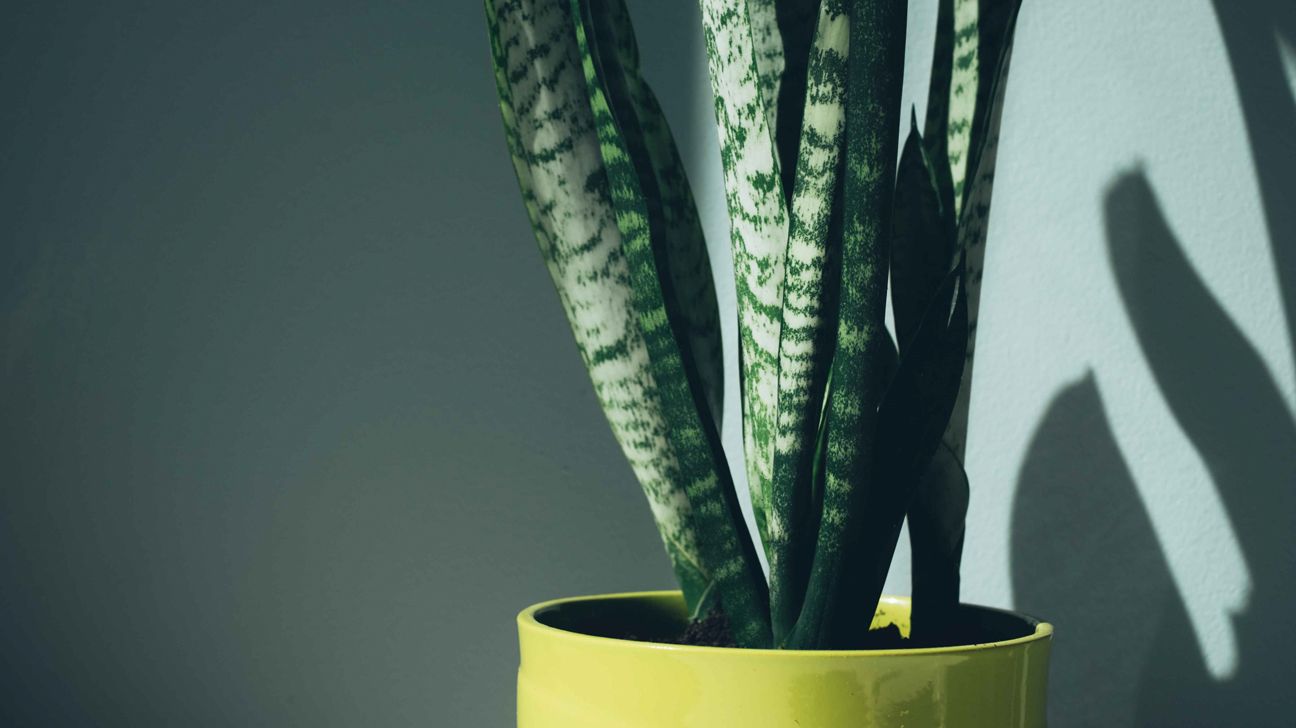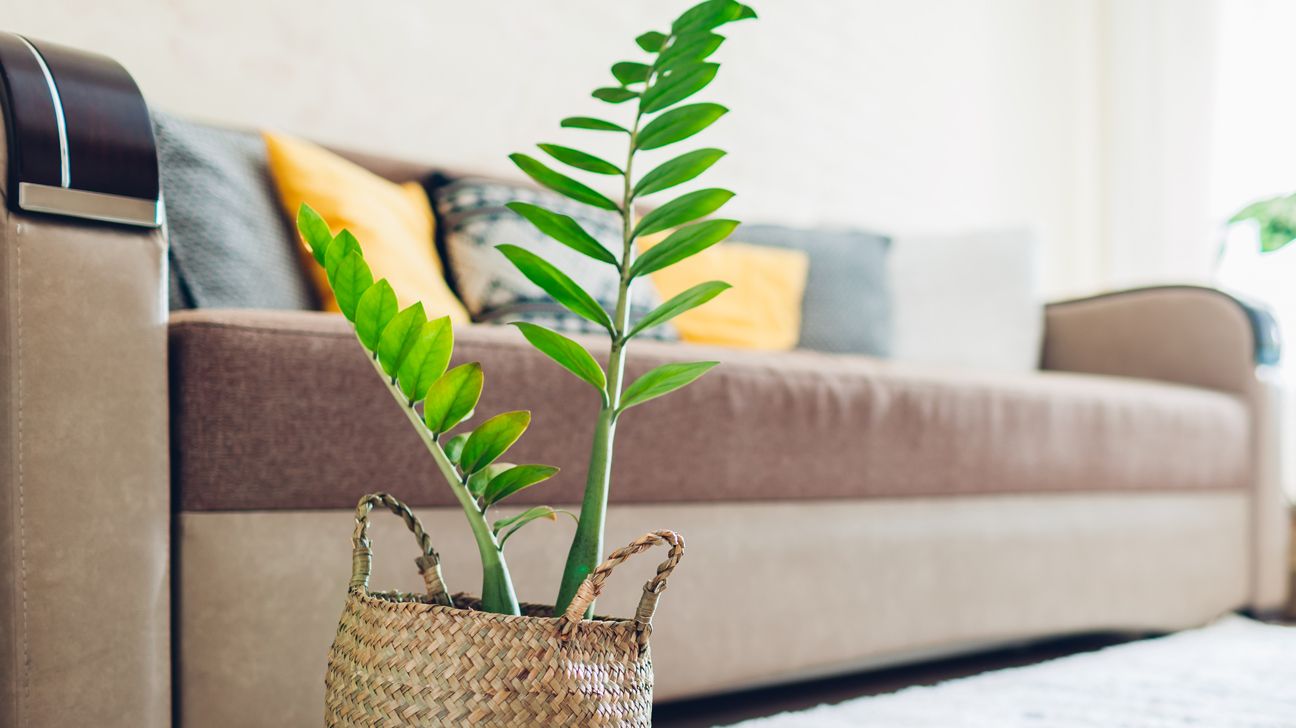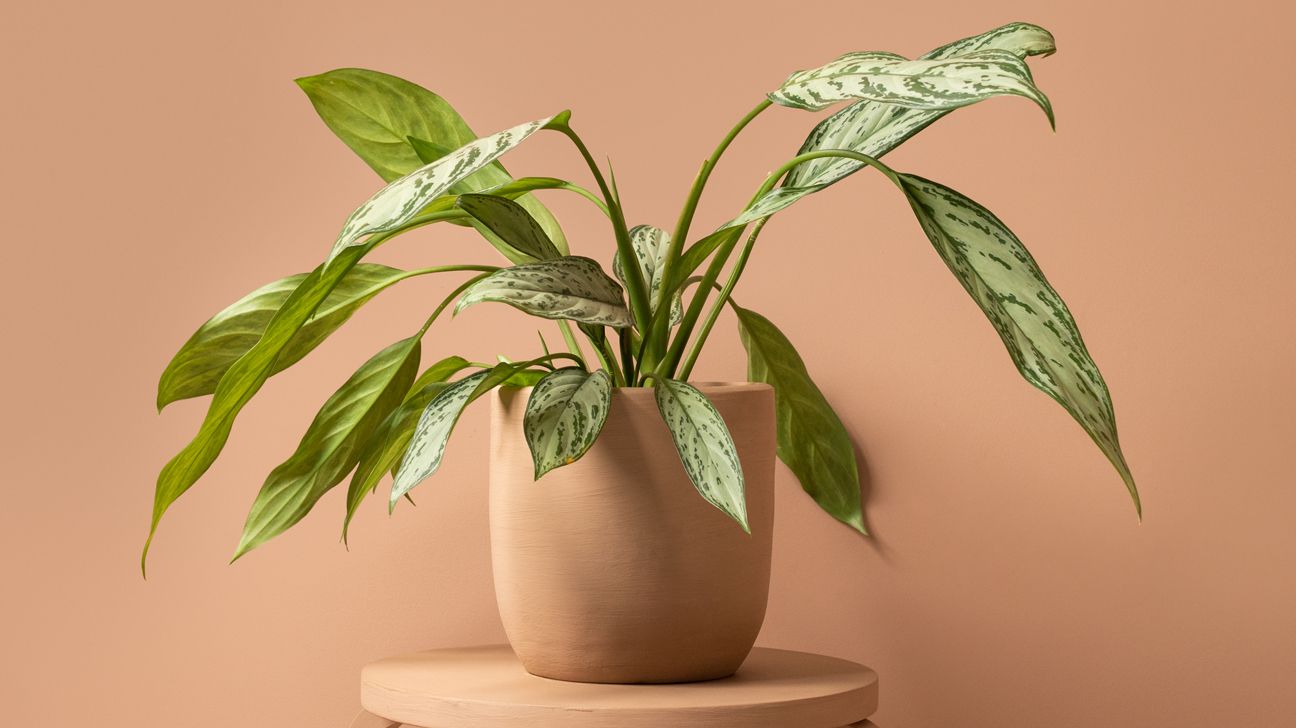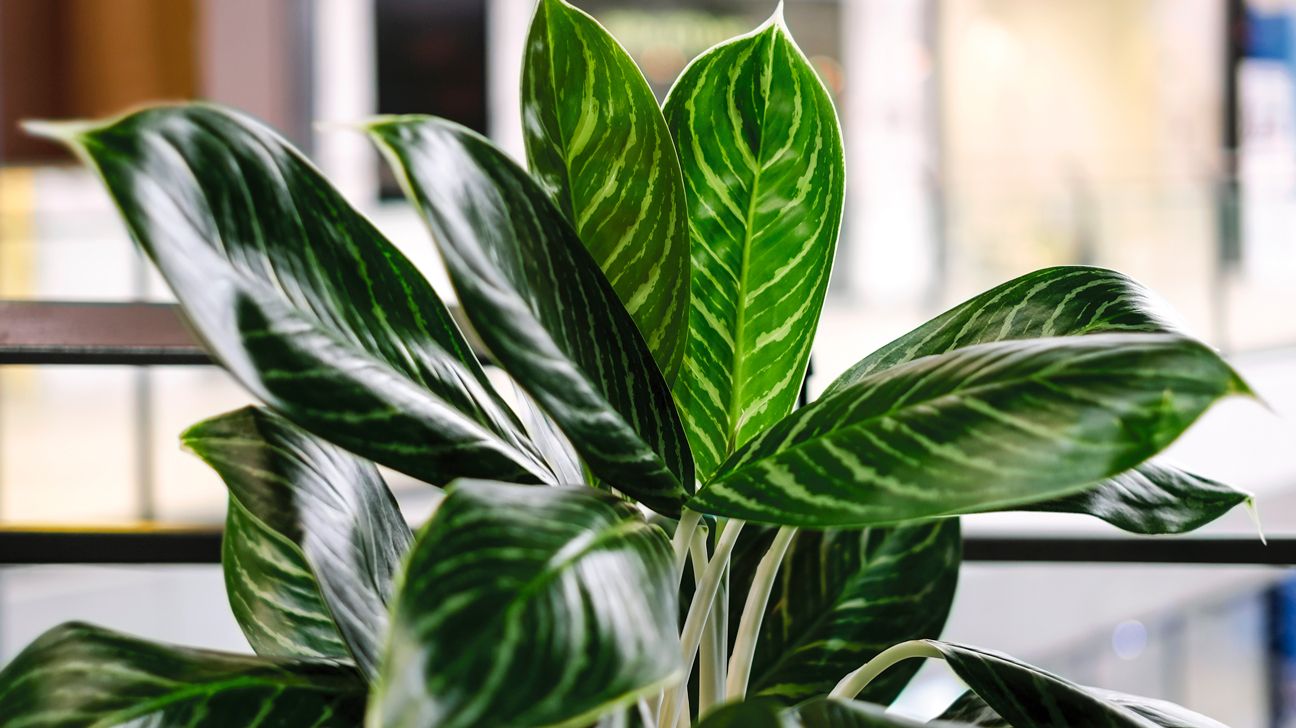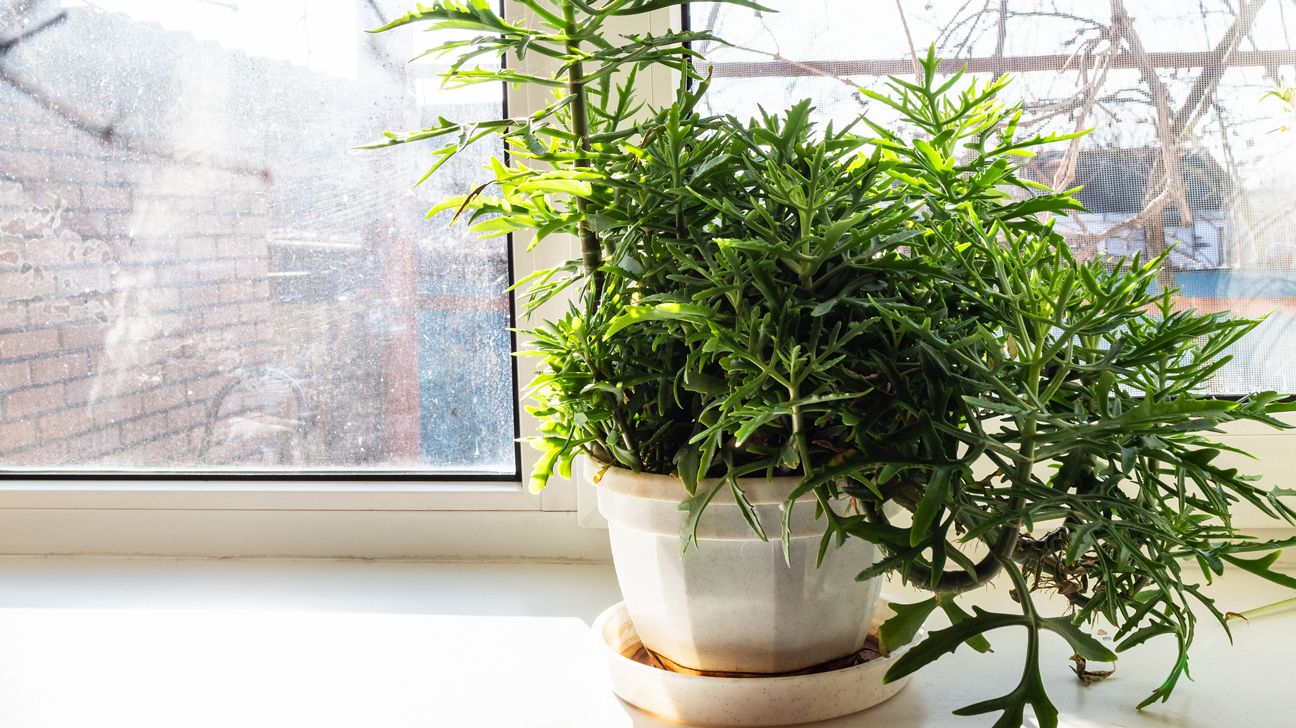We include products we think are useful for our readers. If you buy through links on this page, we may earn a small commission. Here’s our process.
Greatist only shows you brands and products that we stand behind.
Our team thoroughly researches and evaluates the recommendations we make on our site. To establish that the product manufacturers addressed safety and efficacy standards, we:- Evaluate ingredients and composition: Do they have the potential to cause harm?
- Fact-check all health claims: Do they align with the current body of scientific evidence?
- Assess the brand: Does it operate with integrity and adhere to industry best practices?
Raise your hand if plants in the garden section quiver in fear at your approach. Keep it raised if you’ve tried with all your might (and internet-searching skills) to help them flourish in a room with more shadows than Mordor.
Okay, hands down. You’re not doomed to a plantless existence — you just need to choose greenery that jives with your, er… style.
Enter the low-light houseplant. They can thrive in a dim corner and add life to a muggy bathroom. With proper care (we promise it doesn’t take much), you can be the plant parent you’ve always wanted to be.
We rounded up 25 houseplants that are great options for low-light, indoor living. Take note of your desired price range and maintenance capabilities, then browse this list and find your new foliage friend.
Price key
- $ = under $15
- $$ = $16–$30
- $$$ = over $30
$$$
The snake plant, also known as mother-in-law’s tongue, has gorgeous multi-hued green leaves. Not only is this plant not picky about light, but it’s also a serious health booster.
It was among the plants in a NASA study that absorb nasty indoor air pollutants like benzene and formaldehyde. Plus, it absorbs carbon dioxide and releases oxygen at night, making it the perfect plant for a dimly lit bedroom.
$$
If you like plants with a little shine and sheen, the ZZ plant could be for you. It loves bright to moderate indirect light. But it made the list because it can survive in low light, too. You’ll know if it’s getting too much light because its leaves actually curl away from light that’s too harsh. Neat-o.
If you have a reputation as a plant killer, the ZZ could change your luck. It’s low maintenance and only needs occasional watering.
$$
The Chinese evergreen’s beautiful two-toned leaves are hard to miss and bring color to dark corners. There are several varieties from which to choose.
They range from those with reddish highlights to unique varieties with silvery leaves. This indoor beauty likes warm, moist climates. You’ll need moderate year-round temperatures to keep it happy.
$$
For the record, the dumb cane is usually called by its botanical name Dieffenbachia. This one’s brightly colored, two-toned leaves can reach up to 1-foot long. This glossy plant prefers bright, indirect light, but it can still thrive in low light.
It likes regular watering, but be sure the soil doesn’t feel wet or spongy or you could find yourself with an unhappy plant.
FYI: Beware that this is a dangerous plant for cats and dogs, and can cause poisoning and blindness in children. Best to keep it out of reach!
$$
The aptly named staghorn fern is a low-light plant that works both indoors and out. Its leaves look similar to its namesake. They eventually brown and whither before they’re replaced by new growth. They need moderate to low light with moderate moisture.
The staghorn fern doesn’t need typical potting soil. It’s epiphytic. That’s a technical way to say they grow on vertical surfaces like on a tree trunk. When indoors they can be mounted in a basket or plank with a small amount of compost or peat.
$$
All houseplant serial killers should give this one a try. If you’re familiar with feng shui, chances are you’ve heard of lucky bamboo.
Lucky bamboo can survive in soil or water alone. They generally prefer moderate amounts of indirect sunlight. However, too much light is far more harmful than too little with this one.
FYI: The leaves of the lucky bamboo are slightly toxic. They should be kept away from young children and pets.
$$
In the great outdoors, English ivy acts as ground cover. It can scale buildings and trees up to 98 feet (about 30 meters) high. When potted, the leaves drape below the plant.
This makes it a popular choice for hanging baskets or pots set up high so the leaves can cascade down a wall or bookshelf. English ivy loves shade and low-lit areas. The only caveat is that its soil needs to be well drained as it prefers soil that’s dry to the touch.
$$
*Sings* Spider plant, spider plant… This easy-to-manage friend sprouts new spider plants (aka pups) that look like tiny spiders at the end of its narrow, elongated leaves. Hence the name 🕷️.
These plants also made NASA’s list for air-purifying indoor plants, so they’re a beautiful and healthy addition to the home. Be ready to water regularly. Spider plants grow fast and prefer consistent moisture.
$
Heart-shaped leaves that change from bronze to a glossy green make this a popular houseplant. Unless you want the plant to grow long or climb, you need to regularly pinch the stems.
The heartleaf doesn’t mind a dry climate, but you’ll want to give it an occasional misting to keep it happy.
FYI: This one is also toxic to pets.
$$$
The monstera is often mistaken for the split-leaf philodendron. They’re often called the Swiss cheese plant because its glossy tropical leaves often have holes in them 🧀.
Its leaves grow big and wide so it needs a larger space to thrive. Give the monstera low light and moderate temperatures, and you’ll have a content (and unique) plant.
FYI: This one is poisonous. Use care around children and pets.
$$$
The cast iron plant is about as tough as its namesake. It’s not as flashy as other plants, but it makes up for it in ease of care. This hardy plant grows slowly but doesn’t mind low light and won’t shrivel up if you forget to water it for a while.
$
The maidenhair fern is for those truly dedicated to their houseplants. However, the feathery leaves and bright appearance make its high-maintenance worth it.
The maidenhair fern quickly wilts in direct sunlight. It requires misting at least twice a day (or more if you live in a dry climate) and may even need a humidifier in the driest of conditions.
$$
Calathea plants come in several varieties. The most common are the zebra plant, rattlesnake plant, and peacock plant.
You have to keep the temperature and humidity fairly high with these guys. They like shade, but not the darkest of conditions. They’re a little finicky but well worth the work for their gorgeous striped leaves.
$$
What’s not to love about brightly colored anthuriums? Anthurium actually describes a long list of plants — we’re talking about 1,000 — from the araceae family (also known as the arum family).
They’re a true low-light indoor plant in that they do not like direct light at all. However, in the dimmest of conditions, they don’t grow as fast and the flowers don’t get as big. Overall, this plant isn’t super picky about humidity, but you have to be careful not to overwater.
$
The rex begonia is a little out of the ordinary. Depending on the variety, they can have swirling leaves in odd shapes and bright colors. Today’s rex begonias are often hybrids bred for a specific leaf shape or color.
They form flowers, but the flowers aren’t that impressive in comparison to the leaves. The rex begonia prefers consistent watering. The soil should feel dry, but don’t wait until the leaves start to brown or you could have trouble.
FYI: This plant, and especially its roots, are dangerous to pets.
$$
In nature, peace lilies live on the forest floor where they’re heavily shaded and receive a consistent dose of water. Those same conditions are exactly what they need indoors too.
Their beautiful flowers make them a colorful addition to any home, and they’ll continue to bloom on and off throughout the year.
FYI: This plant can cause harm to pets (and kids).
$$
The creeping fig drapes beautifully and is fairly easy to maintain. It’s known for rapid growth and its ability to cover unsightly walls and fences. It’s also hardy enough to survive in almost any light. That dark shadowy corner of your living room will do just fine.
You have to keep this plant pruned because it’s kind of like the ugly duckling in reverse. The leaves are attractive to start but can dull over time.
FYI: This one can cause digestive and external skin irritation.
$$$
Need a plant that thrives off neglect? Look no further than the ponytail palm. They do best in bright, indirect sunlight but will survive in low light too. You can forget to water this plant for quite a while. Once you do water it you need to make sure the roots are well-drained.
$$$
If you’re looking for a quick way to spruce up your bathroom decor, consider this friendly fern. In their natural habitat, they’re found high up in rainforest trees. It prefers warm temperatures and high humidity so it makes a great shower buddy.
$$$
Low-light indoor trees like the dragon tree bring heft and height to a room. Its red-edged leaves are super easy to grow, so even beginners are likely to see success.
Pick a dim corner and give it some space. When grown indoors, they generally reach about 6 feet in height. It can go for a long time without water. If remembering to water isn’t your strength, you may have found your match.
FYI: This one, if ingested, is toxic to pets and children.
$$
While the prayer plant isn’t the lowest maintenance one on our list, it’s relatively easy to manage once you know what to do. The large multi-hued green leaves are stunning and make a little extra work worth it.
They need to be kept in moist, well-drained soil and high humidity. You’ll also need to prune them a few times a year. Keep in mind that prayer plants aren’t a short-term commitment. If well cared for, they’ve been known to live for up to 30 years.
$
Pothos can survive in everything from dim light to fluorescent light only. Whether in your cubicle or bedroom, the pothos will survive. You’ll need to prune pothos unless you want to grow out the vines. You only need to water once the soil has dried out.
FYI: Pothos is toxic to pets and mildly toxic to humans.
$$
The arrowhead’s leaves change shape as the plant grows, which gives you nice variety. The vines are often used for indoor hanging baskets, but you can also train them to grow up a pole for an indoor topiary.
The arrowhead isn’t picky about light, but be careful not to overwater. In drier months it may need some misting.
$$$
Indoor shrub anyone? This tropical plant likes warm climates and doesn’t mind medium, indirect light. But you’ll need plenty of space. Aralia ming can grow to 6 to 7 feet in height when properly cared for. You should prune the lower stems to help shape the plant as it grows.
$$
The moth orchid (aka the phalaenopsis orchid) actually includes many orchids within the phalaenopsis family. They have small colorful flowers that come in a wide variety of colors and patterns. It’s elegant AF.
This orchid loves bright, indirect light but can handle dim light like a champ. It will flower in the spring and summer even in a dark corner. They also like some humidity, so they’ll be happiest in wetter climates.


